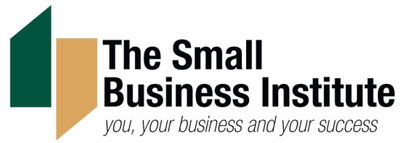
Is the Mark Up you use destroying your bottom line?
- Posted by David Gregory
If you purchase goods for re-sale, it is crucial to understand the difference between Mark-up and Gross Profit Margin – they are two very different things and can have a significant impact on your bottom line!
Many businesses have historically used Mark Up of goods as the s basis for their pricing – they buy something for $1000, Mark Up 100% and sell it for $2000.
Such an approach being primarily based on industry practices, but the problem is the Mark up may not be sufficient to give you the gross margin you need!
The difference between Mark-up and Gross Margin
Whilst a 100% Mark Up sounds like a lot – the reality is, it only actually delivers a Gross Margin of 50%! – and therefore if your Operating Expenses (Rent, your wage, electricity etc.) as a % of sales is 40% – then this leaves you with a Net Profit margin of only 10%!!!
To demonstrate how this works, if we use the example above of purchasing an item for $1000 and then reselling for $2000 – the calculations look like:
Sale Price $2,000
Less Cost of Goods $1,000
Gross Profit $1,000
Gross Profit Margin 50% (Gross Profit $1000 multiplied by 100 divided by Sale Price $2,000)
Clearly, if your Operating Expenses as a % of sales were 40% – the residual 10% would be totally inadequate unless you were selling in huge volumes.
Such a thin margin leaves you very little room to move to cover normal business operating cycles and if you try to discount to generate sales – very quickly you are in the red –you’re bottom line is obliterated!
The Table below demonstrates the different between Mark Up and Gross Margin.
Don’t follow your competitors over the Fiscal Cliff!
Many business owners fall into the trap of using Mark Up % as the basis of their pricing based on industry practices or because that is what competitors do.
However this assumes the other players in the market have a sound basis for establishing their pricing!
In our experience of working with many small businesses – this assumption is incorrect!
Far too many businesses simply have no sound basis for their pricing – other than setting a price point based on what they perceive the market will bear, using industry standard Mark Up and/or copying competitors!
Focus on Gross Margin % not Mark up!
When setting your pricing we strongly recommend that you focus on achieving a target Gross Margin rather than Mark-up – and ensure that the target Gross Margin, provides a large enough Net Margin, for all the effort involved and to cover the normal ups and downs of business cycles.
But what if I need to charge more than my competitors?
If this means you need to increase your prices in order to achieve a more acceptable return and this places you at a price point above your competitors – then you need to think about how you can change the value proposition for your clients.
This then becomes an issue of differentiating yourself enough from the competition so that you offer a different value proposition and shift the focus from price!
Where there is no differentiation – the focus becomes price!
Where there is no differentiation – products become commoditised and then the focus shifts to price!
The lack of differentiation between businesses is borne out by research – which consistently tells us that price is the primary focus for only 17% of buyers – 83% also consider other factors – however the fact in many industries price has become the primary differentiator – says a lot about the lack of differentiation!
Summary
Unless Mark Up is linked to a target Gross Margin, the chances are you will be foregoing income! Your Net Margin will be inadequate for all the time and effort you put into your business!
If by increasing your pricing, you then need to position your offer differently – then this becomes a marketing issue!
Download Free PDF – Is the Mark Up you use destroying your bottom line





0 Comments